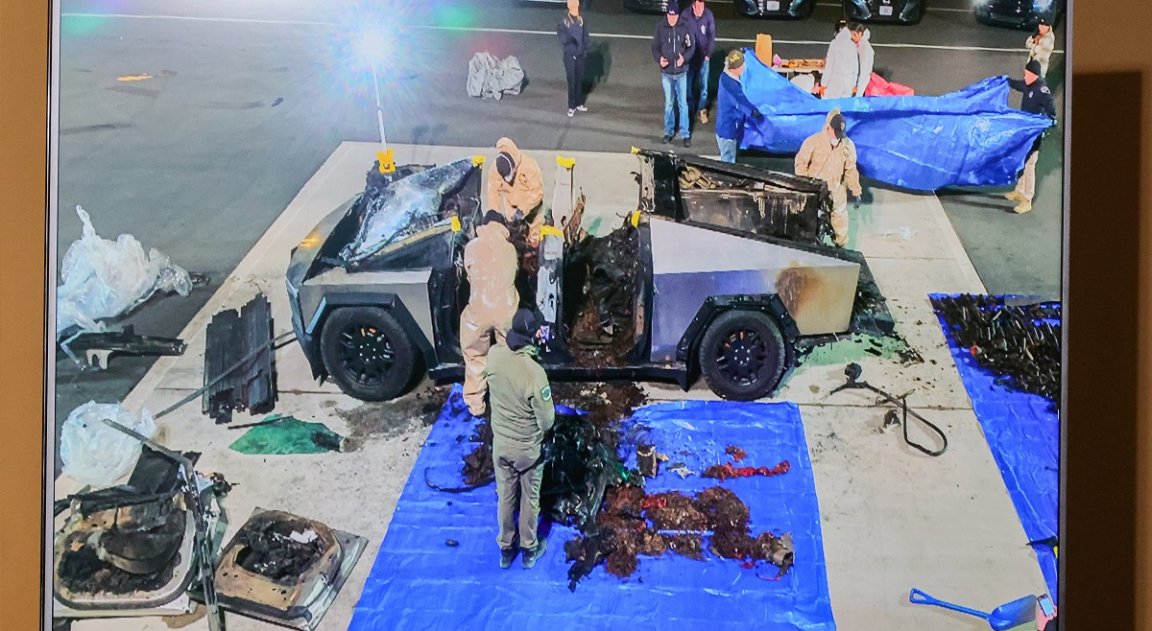
On New Years morning this year, US Army Master Sergeant Matthew Livelsberger rolled his rental cybertruck up near the front doors of Trump International Hotel Las Vegas.
Levelsberger then armed a device which would soon detonate a collection of gas canisters and explosive fireworks, blowing the windows out of the hotel and injuring seven bystanders.
Never one to waste a tragedy, Musk soon took to X-formerly-Twitter to brag up that the “Cybertruck actually contained the explosion and directed the blast upwards” — a claim which inadvertently led to the revelation that Tesla tracks and can remotely lock vehicles.
Now a year into the Cybertruck’s lifespan, it turns out that explosions might be the only thing they make safer.
A new analysis by independent automotive blog FuelArc suggests that fire fatalities are 17 times more likely in a Cybertruck than in the infamous Ford Pinto — the posterchild of deadly cars if ever there was one.
The site arrives at that conclusion by comparing the total units sold so far — 34,438 for the Cybertruck, compared to 3,173,491 for the ill-fated Pinto, discontinued in 1980 — and comparing reported fire fatalities for both.
At the current rate of horrible fiery deaths, FuelArc projects the Cybertruck will have 14.52 fatalities per 100,000 units — far eclipsing the Pinto’s 0.85. (In absolute terms, FuelArc found, 27 Pinto drivers died in fires, while five Cybertruck drivers have suffered the same fate, at least so far.)
Asked for comment, a FuelArc analyst had some advice for Cybertruck owners: “you should know where your emergency door releases are and how to operate them, and instruct your backseat passengers on the same.”
FuelArc caveats that the numbers are an estimate at best, because Tesla doesn’t release its Cybertruck sales data to the public, lest it hurt its stock price. But that’s not the only thing that hasn’t been released.
The Cybertruck — an almost 3 ton vehicle which is apparently allowed to drive itself — has never passed independent crash testing by the National Highway Traffic Safety Administration, and has refused to release its in-house safety testing data, which means other drivers and pedestrians are in the dark as to its safety.
The tacky EVs have been a source of controversy for just about everyone, owing to their apparent lack of crumple zones, hazardous self-driving software, batteries that catch fire, and a small problem where the things brick in the middle of the highway — and that’s just a tiny sampling of the many issues reported with Musk’s cyberpunk fantasy car.
Case in point, they’ve been impounded whenever they’ve shown up in the UK, and EU safety organizations are hoping to ban the things from European streets.
Regardless, civilians in North America are now at the mercy of tens of thousands of them – at least until it becomes too passé to take them out in public.
More on Cybertrucks: Tesla Moves Workers Away From Cybertruck Production as Demand Slumps